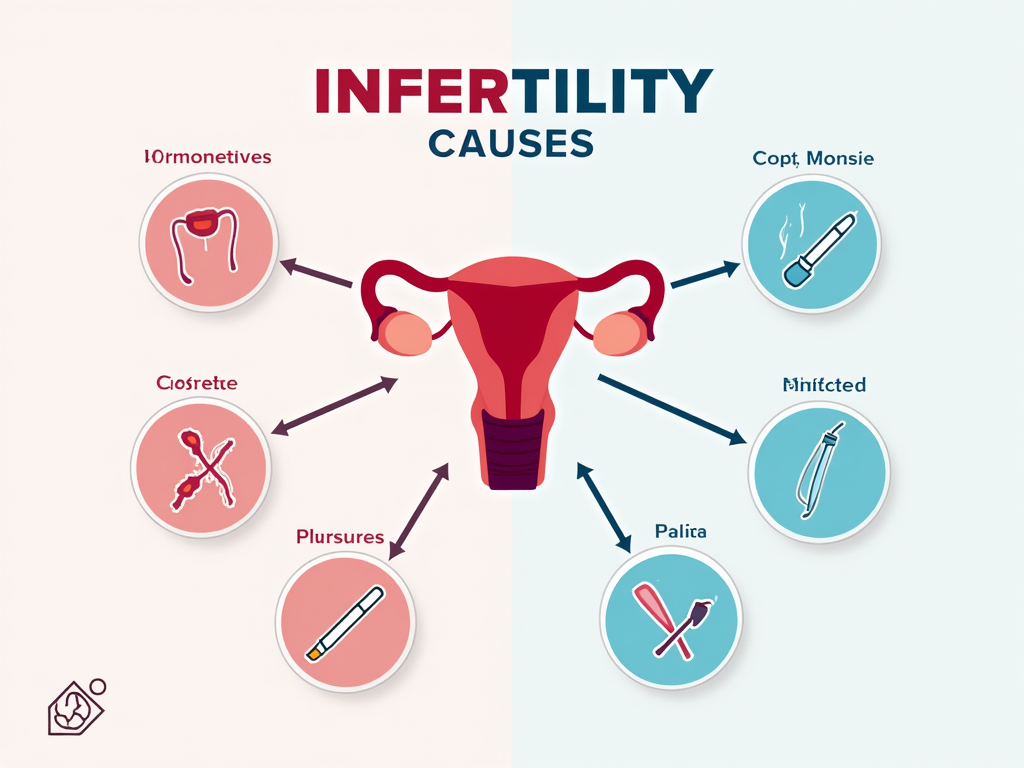Understanding Infertility: Common Causes and How It’s Diagnosed
May 8, 2025, 5:24 p.m.
Infertility affects millions of couples worldwide, often bringing feelings of frustration and hope in equal measure. It’s defined as the inability to conceive after a year of trying. About 10-15% of couples face this challenge, according to the Centers for Disease Control and Prevention (CDC). This article breaks down the common causes of infertility and diagnosis, offering clear insights and real stories to guide you.

What Is Infertility?
Infertility isn’t just a medical label—it’s a personal experience that can feel overwhelming. It can happen because of issues in men, women, or both. Sometimes, even after tests, the reason stays a mystery. That uncertainty can be tough, but knowing help exists makes a difference. It’s not your fault, and you’re not alone in this journey.

Common Causes of Infertility
So, what leads to infertility? Let’s look at the main culprits.
For Women
- Hormonal Imbalances: Conditions like polycystic ovary syndrome (PCOS) mess with ovulation. Your body might not release eggs as it should.
- Structural Problems: Blocked fallopian tubes or uterine fibroids can stop sperm from meeting the egg.
- Age: After 35, fertility drops. Eggs decrease in number and quality, making conception harder.
- Lifestyle Choices: Smoking, heavy drinking, or being overweight can hurt your chances.
For Men
- Low Sperm Count or Quality: Genetics, infections, or even too much heat (think hot tubs) can lower sperm numbers or movement.
- Erectile Issues: Trouble with erections or ejaculation can make natural conception tricky.
- Hormonal Problems: Low testosterone can slow sperm production.
About 40% of infertility cases tie back to men, so it’s a shared issue. I’ve met couples who felt relieved to pinpoint a cause—it gave them a starting point to fight back.

Diagnosing Infertility
Getting an infertility diagnosis starts with understanding your story. Here’s how it usually goes:
- Medical History: Your doctor asks about your sex life, periods, and past pregnancies.
- Physical Exams: Both partners get checked for any obvious signs.
- Tests:
- Women: Blood tests measure hormones, ultrasounds look at your ovaries, and a hysterosalpingogram checks your tubes.
- Men: A semen analysis tests sperm count, shape, and speed.
- Specialists: You might see a reproductive endocrinologist if things get complex.
It’s a lot to take in, right? But each step brings you closer to answers. A friend once told me how nervous she was waiting for results, yet how empowering it felt to finally know what was happening.

The Role of IVF in Treating Infertility
When natural conception doesn’t work, IVF (in vitro fertilization) can be a game-changer. Eggs are taken from the ovaries, mixed with sperm in a lab, and placed back in the uterus. It’s perfect for blocked tubes, low sperm counts, or unexplained cases.
Success isn’t promised, but it’s improving. The Society for Assisted Reproductive Technology reports a 40% live birth rate for women under 35. I’ve seen friends light up sharing their IVF success—like a couple who welcomed twins after years of waiting. It’s tough, but it can work.

Personal Experiences and Insights
Infertility hits more than your body—it tests your heart. Couples often ride waves of hope and despair. Sarah, a 34-year-old nurse, shared her story with me: 'We tried for three years. Tests showed nothing clear, which crushed us. IVF was our last shot, and now we have a son.'
The emotional side matters. Finding a support group or just talking to someone who gets it can lift that weight. It’s not just about getting pregnant; it’s about feeling understood.
Summary
Infertility is tough, but knowing the common causes of infertility and diagnosis helps you take control. From hormonal hiccups to lifestyle tweaks, the causes vary. The infertility diagnosis process lights the way forward, and options like IVF bring hope. Real stories show you’re not alone—help is out there. Reach out to a doctor if you’re ready to start.